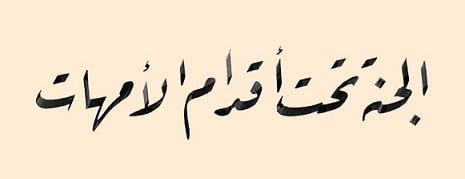Reqaa Script
When it comes to the world of calligraphy, the Riq’a script stands out as a true embodiment of grace and beauty. Derived from the Arabic noun “ruq’a,” meaning “a patch or piece of cloth,” this script has a fascinating history and a unique charm of its own. In this article, we will delve into the origins, evolution, and significance of Riq’a script, showcasing why it has become the preferred script for handwriting throughout the Arab world.
Riq’a script traces its roots back to the Naskh and Thuluth scripts. Its name, “Riq’a,” was inspired by the practice of writing it on small pieces of paper, often used for petitioning royalty. Over time, Riq’a script evolved in various directions, acquiring distinctive characteristics that set it apart from its predecessors.
Compared to Thuluth, Riq’a script is less complicated, featuring smaller letters with more curves. Its geometric forms retain the elegance of Thuluth but in a more compact manner. The script boasts rounded and densely structured letters, with short horizontal stems. Notably, the letter alif is never written with barbed heads in Riq’a, adding to its aesthetic appeal.
Riq’a script gained significant recognition and popularity among Ottoman calligraphers. One of its most influential contributors was Shaykh Hamdullah al-Amasi, who made notable enhancements to the script. Under his skilled hand, Riq’a script flourished and underwent refinements that further solidified its position as a favored script among calligraphers.
Even in the present day, Riq’a script continues to captivate calligraphers and enthusiasts alike. Its harmonious curves and balanced proportions make it a versatile choice for various applications. From official documents to artistic expressions, Riq’a script finds widespread use across the Arab world. Its popularity can be attributed to its legibility, fluidity, and the rich cultural heritage it embodies.
Mastering Riq’a script requires not only technical skill but also a deep appreciation for the art form. Calligraphers meticulously practice the delicate curves and precise proportions that define this script. Each stroke carries meaning and emotion, and the overall composition exudes an aura of sophistication. The artistry of Riq’a script lies in its ability to convey words with elegance and evoke a sense of aesthetic pleasure.
As the world becomes increasingly digital, there is a growing need to preserve and celebrate traditional forms of expression. Riq’a script represents an essential part of the Arab cultural heritage, and efforts must be made to ensure its continuity. By showcasing the beauty and historical significance of Riq’a script, we contribute to its preservation and inspire a new generation of calligraphers to carry the torch forward.
In brief, Riq’a script is a testament to the artistic ingenuity of Arabic calligraphy. Its evolution from Naskh and Thuluth, the influence of Ottoman calligraphers, and its present-day popularity all contribute to its enduring appeal. The beauty of Riq’a script lies not only in its visual aesthetics but also in the rich history and cultural heritage it represents. By embracing and celebrating this remarkable script, we honor the legacy of the past while ensuring its place in the future.

